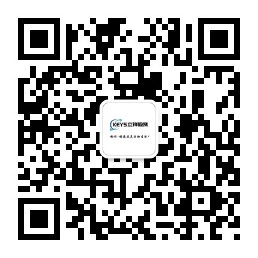The Bureau of Indian Standards (BIS) is the main institution in charge of standardization and certification in India. It was officially established in 1987 to replace the Indian Standards Institution founded in 1946. Subordinated to the Ministry of Consumer Affairs and Public Distribution, although BIS is a social legal entity, it exercises government functions. Its main tasks include formulating and implementing national standards, implementing the conformity assessment system, and issuing and managing BIS certification certificates.
Based on India's national conditions, Indian certification has its own unique characteristics, such as numerous document requirements, complex certification procedures, a strong sense of hierarchy, cumbersome formalities, and strict factory inspections and product sample sealing. For inexperienced service institutions, it may take more than a year to complete an Indian certification, and there is no guarantee of obtaining the certificate.
· The first batch (Mandatory since 1986, enforced in batches until now): The BIS certification is applicable to manufacturers from any country. The main certification areas include: 1. Tires; 2. Household appliances such as electric irons, kettles, electric stoves, and heaters; 3. Cement and concrete; 4. Circuit breakers; 5. Steel; 6. Electric energy meters; 7. Automobile parts; 8. Food, milk powder; 9. Dairy products; 10. Tungsten filament lamps; 11. Oil - fired furnaces; 12. Large - scale transformers; 13. Plugs; 14. Medium - and high - voltage wire and cable; 15. Self - ballasted tungsten filament lamps.
· The second batch (Compulsory since March 2013 until now): The mandatory registration products are electronic information technology equipment, including 1. Set - top boxes; 2. Portable computers; 3. Laptops; 4. Tablets; 5. Monitors with a screen size of 32 inches and above; 6. Video monitors; 7. Printers; 8. Plotters; 9. Scanners; 10. Wireless keyboards; 11. Telephone answering machines; 12. Automatic data processors; 13. Microwave ovens; 14. Electronic clocks with mains power supply; 15. Electronic music systems.
· The third batch (Compulsory since November 2014): 1. Power adapters for IT equipment; 2. Power adapters for AV equipment; 3. Uninterruptible power supplies (UPS); 4. DC or AC LED modules; 5. Batteries for handheld devices; 6. Self - ballasted LED lamps; 7. Fixed LED luminaires; 8. Mobile phones; 9. Cash registers; 10. Point - of - sale equipment; 11. Copiers; 12. Smart card readers; 13. Postal processing machines, automatic stamping machines; 14. Mobile power banks.
· Application: More than 20 documents need to be submitted, including but not limited to: 1. Location of the factory and factory layout plan; 2. Proof of production premises; 3. List of existing production and inspection equipment; 4. The test and inspection plan in use or proposed for use, together with a letter of commitment to comply with the BIS - recognized test and inspection plan after the certificate is awarded; 5. A letter of commitment to pay the specified marking fee from the date of the award of the certificate; 6. Product drawings and internal test reports; 7. Statement of laboratory cooperation; 8. Information and resumes of quality personnel, etc.
· Recording: After detailed review, if the application procedures are complete, BIS will record the application and assign an application number to the applicant, and the application is thus established.
· Initial inspection: The applicant and BIS agree on a date, and the BIS inspection officer will conduct the initial inspection of the factory. Through the evaluation of the company's production capacity and control level, quality control technology, existing equipment, staff skills, and sample testing, etc., it is determined whether the product meets the Indian standards. Sample testing can be carried out in the factory, and it will also be carried out in BIS or other recognized laboratories. During the initial inspection, the BIS inspection officer will also discuss with the applicant's management the test and inspection plan that must be implemented after the certification. The test and inspection plan clearly stipulates the production process control that must be implemented.
· Issuance of the certificate: If the results of the initial inspection and sample testing meet the requirements, a certificate will be issued to the applicant. The validity period of the certificate is one year. If the implementation of the certificate is correct, it can be extended for two years upon application. If the certificate holder wishes to expand the scope of products covered by the same standard of the certificate, it can be changed after passing the routine test and meeting the conditions. If the validity period of the certificate expires, the certificate can be renewed according to the implementation situation within the validity period of the certificate.
· Post - certification supervision: After the certificate is awarded, if the certificate holder has fully implemented the test and inspection plan, the product is in line with the Indian standards, and the sample test records are complete, it is authorized to affix the mark on the product. The applicant needs to pay a certain marking fee.
BIS will conduct regular supervision and inspection on the certificate holder regarding the implementation of the certificate. This supervision and inspection mainly focus on whether the test and inspection plan is fully implemented and whether the quality control system is strictly implemented according to the technical standards. At the same time, the production samples are tested, and the sampled samples are sent to BIS or an independent laboratory for inspection.
The cycle of Indian BIS certification is relatively long, which depends on the product testing situation and the smoothness of the factory inspection. Some may only take two or three months, some may take half a year, and some may even take more than a year. In special cases, Lixiang Testing provides an expedited service, which is subject to the specific requirements of customers.
The certification costs include registration fees, product testing fees, service fees, taxes, etc. Depending on your product data, model, and specific information, you need to provide the product manual for further judgment.
